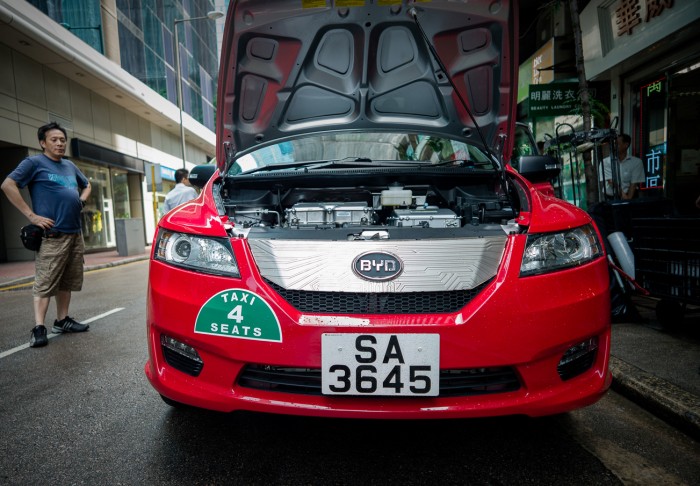How Other Battery Manufacturers Could Help Tesla Reach Its Own Goals
If you build enough batteries, electric cars will come—or so the thinking goes. Turns out, Tesla isn’t alone in this line of thought.
Tesla’s Gigafactory is planned to churn out 35 gigawatt-hours of cells every year by 2020. That’s a lot of watt-hours, and something Elon Musk is very proud of.
But as Bloomberg points out, Chinese electric carmaker BYD plans to produce 34 gigawatt-hours of cells by the same year. Another Chinese firm, Contemporary Amperex Technology, intends to produce 26 gigawatt-hours by that stage, too. And there will be other manufacturers joining in, as well as refurbished batteries being reused—meaning that there could be upwards of 130 gigawatt-hours of batteries produced per year by 2020.

All of a sudden, Tesla’s battery output will look like a slice of a much larger pie—a significant slice, but a slice nonetheless. The volume means that prices should drop big time. In fact, an analysis by Bloomberg New Energy Finance suggests that prices could fall to $262 per kilowatt-hour by 2020, and as little as $126 per kilowatt-hour by 2030.
That’s perhaps bad news for the bottom line of battery makers. In fact, Bloomberg compares it to the fate that solar cell manufacturers have faced, where a flood of the hardware drove down prices by over 60 percent in as little as five years.
But it’s incredibly promising for the electric vehicle market more generally. Last year, a team of academics published research suggesting that when battery pricing hits $150 per kilowatt-hour, we could see “a potential paradigm shift in vehicle technology.” If BNEF’s numbers are correct, the 2020s could be the decade in which electric cars hit the big time.
Volkswagen seems to be among those in agreement. The automaker has announced that it’s signed an agreement with Chinese car manufacturer Jianghuai Automobile to explore the production of electric vehicles in China. It hopes to sell a million electric vehicles per year by 2025.
Of course, Tesla is even more ambitious, and it’s right to be so worried about battery production if it’s to meet its own targets. With around 400,000 pre-orders for its forthcoming Model 3 to satisfy, driving down prices in the next few years is likely to be the only chance it has of making the vehicle a success.
Whether Tesla can satisfy those pre-orders remains to be seen. But by ramping up production so fast, the company is at least doing its part to invigorate a manufacturing industry that will help guarantee a future of electric vehicles—whoever happens to make them.
(Read more: Bloomberg, Wall Street Journal, “The 2020s Could Be the Decade When Electric Cars Take Over,” “The Tesla Model 3 May Depend on This Battery Breakthrough,” “SolarCity’s Gigafactory”)
Keep Reading
Most Popular
Large language models can do jaw-dropping things. But nobody knows exactly why.
And that's a problem. Figuring it out is one of the biggest scientific puzzles of our time and a crucial step towards controlling more powerful future models.
The problem with plug-in hybrids? Their drivers.
Plug-in hybrids are often sold as a transition to EVs, but new data from Europe shows we’re still underestimating the emissions they produce.
How scientists traced a mysterious covid case back to six toilets
When wastewater surveillance turns into a hunt for a single infected individual, the ethics get tricky.
Google DeepMind’s new generative model makes Super Mario–like games from scratch
Genie learns how to control games by watching hours and hours of video. It could help train next-gen robots too.
Stay connected
Get the latest updates from
MIT Technology Review
Discover special offers, top stories, upcoming events, and more.